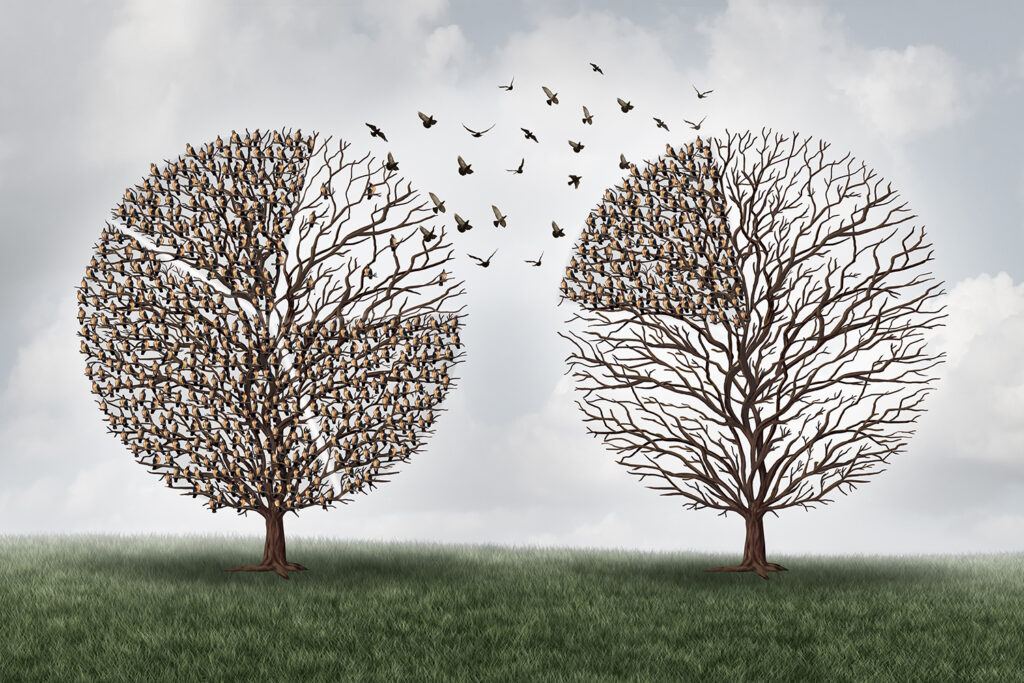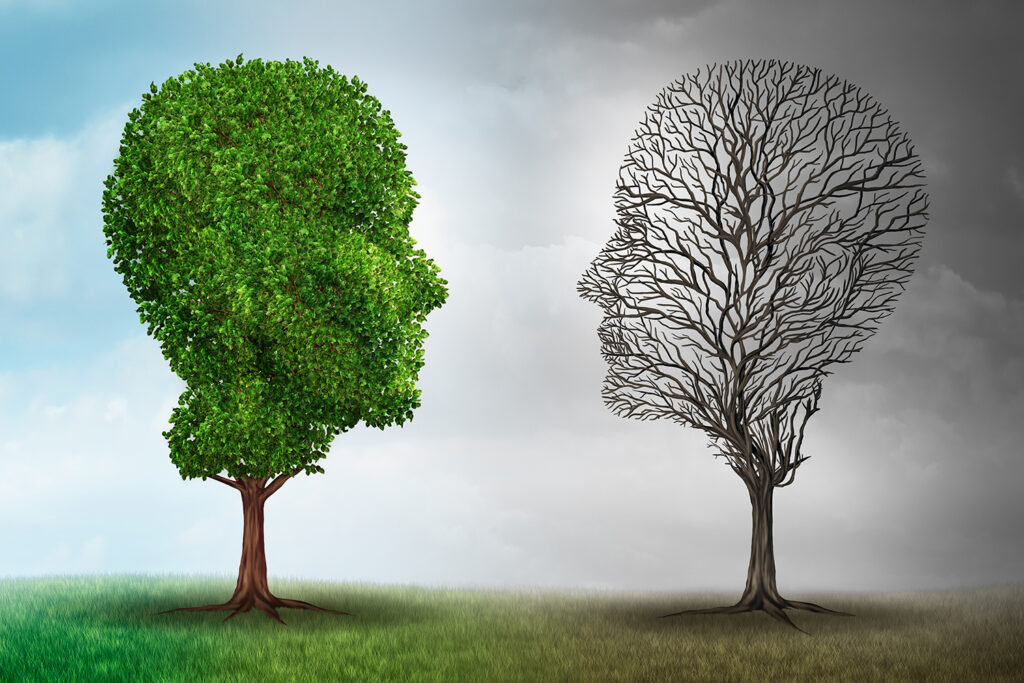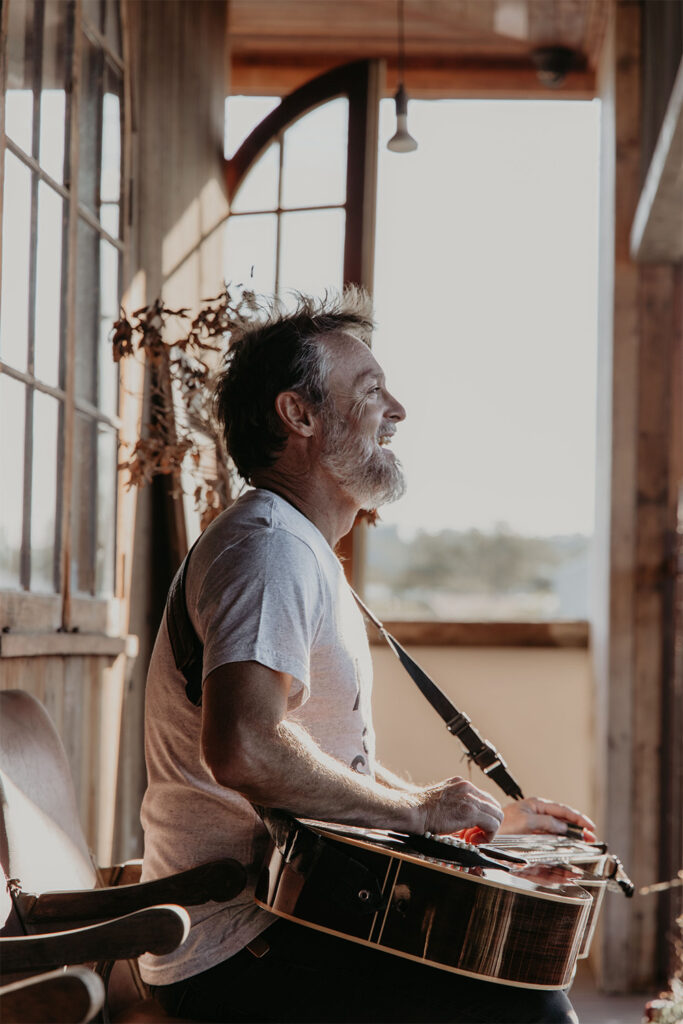In the late 1960s, a young doctor named Bruce Greyson was eating spaghetti in a hospital cafeteria when his pager went off. Startled by the noise, Greyson dropped his fork, splashing tomato sauce everywhere, including on his tie. He cursed under his breath as he wiped the sauce off with a wet napkin. It would leave a stain that would change the course of his life.
As Greyson details in his book After: A Doctor Explores What Near-Death Experiences Reveal About Life and Beyond, after dialling the number on the pager’s display, he learned that a woman called Holly was in the emergency room following a drug overdose. Greyson grabbed his lab coat, buttoning it up to hide the stain on his tie, before heading down to the ER.
He found Holly unconscious but in a stable state and after doing some routine checks, went to the family lounge at the far end of the hallway. There Holly’s roommate Susan was pacing back and forth. Feeling a little hot in the windowless room, Greyson undid his lab coat and moved a fan closer to him, before sitting down to talk to Susan.
He questioned Susan about her roommate, trying to establish if Holly may have been doing drugs or suffering from mental health problems. At one point he thought he saw Susan shudder slightly.
After concluding the chat, he returned to Holly’s room where she was still out cold, a ‘sitter’ confirming that she hadn’t stirred since he left the room. Greyson left for the night, quietly congratulating himself that no one had noticed his sauce stain.
When he returned to the hospital the next morning, Holly was now awake and able to talk. He introduced himself to Holly, who responded with a sentence that would dumbfound Greyson.
“I know who you are. I remember you from last night.”
“You looked like you were asleep in the ER last night,” Greyson replied. “I didn’t think you could see me.”
Holly’s reply: “Not in my room. I saw you talking with Susan, sitting on the couch. You were wearing a striped tie that had a red stain on it.”
Holly proceeded to recount the conversation Greyson had with Susan, detailing all his questions along with Susan’s pacing and his moving the fan, without any mistakes. As Greyson writes in After, “the hair rose on the back of my neck and I felt goosebumps. She couldn’t possibly have known all that”.
To this day Greyson still can’t account for how Holly knew what she did. Raised in a household that encouraged scepticism and critical thinking, the experience was, Greyson says, “a frontal assault on my worldview”.
Greyson would go on to have an esteemed career in academic psychiatry. The 74-year-old is currently Professor Emeritus of Psychiatry and Neurobehavioral Sciences at the University of Virginia School of Medicine and was elected a Distinguished Life Fellow of the American Psychiatric Association. But he never forgot about Holly and her knowledge of his stained tie.
It would lead him to begin a sideline career studying the experiences of those who’ve temporarily shuffled off their mortal coil, only to shuffle back on again. In the mid ’70s he worked with Dr Raymond Moody at the University of Virginia. Moody’s book, Life After Life, was the first to use the term Near-Death Experience and the acronym NDE. Greyson would learn that his experience with Holly wasn’t unique; that there were accounts of NDEs dating all the way back to Ancient Greece. He would discover that NDEs are common, affecting roughly 10-20 per cent of people whose heart stops. And he would observe that NDEs don’t discriminate: they affect everyone from nannies to neuroscientists.
Over the course of 45 years, Greyson compiled a collection of the accounts of over a thousand ‘experiencers’, who filled out questionnaires for him. He also established clinical guidelines to quantify NDEs that are still in use today. Known as the Greyson scale, the 16-point questionnaire attempts to measure the depth of an individual’s NDE.
So, what are some of the key characteristics of an NDE? They often include a brilliant light; being drawn into a tunnel or darkness; a sense of overwhelming peace and unconditional love; a sensation of leaving the body, sometimes floating above it; a life review, or return of memories from the past; and encounters with deceased loved ones or divine beings. Less common are experiences that may be frightening or distressing rather than peaceful.
Of the thousands of NDEs reported, one of the most puzzling and frequently cited is that of Pam Reynolds, an American woman who underwent brain surgery in 1991. Despite having her eyes taped shut and her ears blocked, upon waking she was not only able to describe an NDE but the bone saw used to cut into her skull.

Throughout the course of his research, Greyson has tried to maintain an attitude of intellectual honesty and openness when investigating cases such as these, while maintaining his natural scepticism. He refuses to take sides in a binary debate between those who see NDEs as spiritual experiences and those on the materialistic side who insist they are the result of purely physical changes in the brain prior to death. “I think there is enough evidence to take seriously both a physiological mechanism for NDEs and continued functioning of the mind independent of the brain,” Greyson writes in After.
If this sounds like fence-sitting, well, it is. But while even entertaining a spiritual explanation for NDEs invites a degree of scorn in scientific circles, in a field as confounding and difficult to investigate as this, you could argue Greyson’s is a rational position.
Consider for a moment the corporeal mechanics of NDEs. Heart failure precipitates a rapid decline in brain function, with brain waves flatlining within 11-20 seconds. At that point the brain is effectively unplugged machinery, as useless as an old microwave you dump on your nature strip for council pick-up. Or it should be. In fact, this is the period, before resuscitation, in which researchers believe NDEs occur.
Materialistic explanations for NDEs posit that in the event of a health catastrophe, such as a cardiac arrest, oxygen deprivation puts the brain on a war footing, as it frantically, possibly manically, attempts to repel morbidity’s onslaught. A cascade of neurochemicals may trigger euphoria. Stimulation of the brain’s temporoparietal junction, a region associated with self-perception that may be impacted early in a neurological crisis, can cause feelings of disassociation, providing a possible explanation for out-of-body sensations. The appearance of deceased loved ones could be due to dysfunction in the brain’s dopamine pathways, with Alzheimer’s and Parkinson’s patients known to have vivid hallucinations of ghost-like figures. Similarly, oxygen shortage to the retina (retinal ischemia) has been identified as a possible explanation for the long tunnel and bright light many NDErs report.
Some researchers believe a sleep disorder called REM intrusion, symptoms of which include paralysis and hallucinations, could account for some of the fantastical elements reported in NDEs. A study at the University of Kentucky of 55 people who’d had NDEs found 60 per cent reported some history of REM intrusion compared to 24 per cent in a control group. Others point to the cognitive similarities between NDEs and the altered states induced by psychedelic drugs such as ketamine and psilocybin as evidence of an exclusively brain-driven phenomenon.
One of the more compelling pieces of evidence supporting a materialistic position came from a 2013 study at the University of Michigan, in which researchers euthanised rats with an injection of potassium chloride, causing their hearts to stop beating. For up to 30 seconds afterwards the researchers detected patterns of synchronised, high-frequency electrical activity known as gamma waves. The intensity of the spike, the researchers speculated, could suggest that different parts of the brain were communicating with one another more actively than when the rats were awake. Could a similar surge of activity occur in humans, they wondered? The answer is a qualified yes. Recently, the journal Frontiers in Aging Neuroscience reported on a 2016 case involving an 87-year-old man, who exhibited a similar 30-second spike in high gamma-type brain signals before cardiac arrest. This activity then declined for about 30 seconds after his heart stopped beating before ceasing completely.
Greyson examines many of the accepted brain-based models in After, concluding that while each may address one particular facet of NDEs, none can convincingly account for the entire experience. In his opinion, the truth remains out there.
One thing he does know for sure is that NDEs transform lives, turning atheists into spiritualists, entrepreneurs into philanthropists, sceptics into believers. Many experiencers, he says, feel more loving towards themselves and others, more compassion for others, have an increased sense of meaning and purpose in life and less interest in material possessions, personal recognition and competition. Perhaps most importantly, they often no longer fear death. “The fear of death makes us afraid of almost everything,” says Greyson, who appears spry in rimless spectacles and a blue polo shirt, as he chats to me from his house in Charlottesville, Virginia. “We don’t want to take chances because we don’t want to risk getting hurt and if you’re not afraid of dying anymore, then you don’t mind taking chances, which means you live life to the fullest. There’s a saying, when you lose your fear of dying, you also lose your fear of living.”
Ultimately, whether you consider NDEs a spiritual gateway, afterlife appetiser or neurological fire drill, that may be their most important and lasting lesson.

Men’s Health: You were drawn into the world of NDEs initially through your experience with the woman called Holly. Do you think you would’ve started researching them without that personal experience?
Bruce Greyson: I think I probably would have because I had encountered a few other near-death experiences in my clinical work and found them very puzzling. Then when Moody published his book Life After Life in 1975 and said that there were lots of these around, I thought, well, we don’t understand this, we better study it. I felt that was the obligation of a scientist: to study things we don’t understand.
You grew up in a household that fostered scepticism and you sought to approach research into NDEs with an open but sceptical frame of mind. Why is it important to take that approach in research generally and NDEs in particular?
Well, it’s very easy in any field of research to let your biases affect either what you see or how you interpret what you see. So, it’s important to try to keep an open mind. I must admit that when I started looking into NDEs, I still had that materialistic mindset and I just assumed that I was going to find some physiological explanation for them because that’s the only world I knew. I didn’t know anything about a spiritual world.
You say in the book that the confounding nature of NDEs would force you to become sceptical about your scepticism. Why was that?
Well, there were things that happened in NDEs that were not compatible with the materialistic worldview that the mind is simply ‘what the brain does’ and nothing else. Some of that comes from people who leave their bodies and can describe things accurately from a visual perspective outside the body. Some of it comes from people who claim to encounter in death deceased persons that no one knew had died yet.
As you say, you’ve moved away from the materialistic view that the mind is a product of the brain and now believe they are separate, but related entities. Is that the only way you can explain the possibility of the continuity of consciousness after death?
Well, if the mind is just ‘what the brain does’, then when the brain dies, the mind must die also. The mind has to stop, so that model cannot explain it. But there are problems with the other model that the mind and brain are separate things and somehow interact. I can’t explain things that way either. So, I don’t have an answer. I have just the facts that it [an NDE] happened. I can’t explain how.
What do you make of the study on rats at the University of Michigan where after their hearts stopped beating there was a burst of electrical activity in their brains?
I think it’s an area people should look at, but that rat study did not really show very much. If you actually look at the data they reported, it was a very tiny amount of electricity, not anywhere near the activity of the brain before the rat was killed. It lasted about 30 seconds and that’s all. NDEs often go longer than that. If the rats were anaesthetised before they were killed they did not have this burst, and of course, many NDEs do occur under anaesthesia. So, there are a lot of reasons why this research didn’t really make sense when applied to NDEs. Now there have been people who’ve tried to do the same type of work with humans with variable results. By and large, our clinical experience over the last 70 or 80 years shows that when people’s hearts stop, the brain waves generally go flat within a matter of 10 to 20 seconds and there is no burst like that.
“People can see surprising things they couldn’t have guessed”
Some of the sensations common in NDEs can be induced by psychedelic drugs, particularly feelings of oneness and interconnectedness. You speculate that the brain could be a filter and that when different parts of the brain are allowed to interact with each other, that we might be able to access the full spectrum of stimuli available to us. Is that what may allow NDEers to see different perspectives on their body and their existence?
Well, the idea that the brain filters the stimulation it gets is kind of an obvious thing. Right now, you are listening to me talk to you and you’re not paying attention to things like how your shirt feels on your body or what your bowels may be doing. Your body is perceiving them, but your brain is filtering them out, so you’re just paying attention to one thing. Our brains do that. They are designed to filter out things that aren’t important to us right now in order to help us survive in the physical world. It’s not designed to help us contact deceased loved ones or a deity, if there is one.
There are various things that can disable or weaken the filters, one of them being psychedelic drugs. There are other ways that spiritual traditions have developed over the centuries. Meditation and so forth. But one of the most reliable ways is by coming close to death.
The phrase often used by NDEers is that their experience was ‘realer than real’. That same phrase is often used by people to describe lucid dreams. Between lucid dreaming, psychedelic drugs and NDEs, are these hints that there is potential for the brain to do a lot more than what it does to survive?
That’s right. I have looked at lucid dreaming and I can’t say that I’m very impressed by it. I am a lucid dreamer myself, but I don’t think my lucid dreams are realer than real and I have lucid dreams almost every night. I know that I’m dreaming and I can, if I don’t like the way the dream is going, change it or wake myself up. But I know that it’s a dream when I’m having it and it doesn’t feel like it’s real.
The proportion of people whose hearts stop who have NDEs is somewhere between 10 to 20 per cent. Do you think it’s possible that many more people have them, but don’t recall them?
Well, there are certainly people who have them, but aren’t willing to talk about them. So, for that reason, there may be more than just 10 to 20 per cent. I don’t think it’s a huge number though, because if you look at how the experience changes people’s lives, people who describe a near-death experience have much more dramatic changes than people who come close to death, but don’t report an NDE. So, I tend to think those people who don’t report NDEs probably haven’t had one if they don’t have the after-effects.
There are so many astonishing stories that you cite in the book. Is there one that really stands out to you?
It’s hard to pick one. But the story of Jack, who at roughly the age of 25, was hospitalised and had his nurse go off on a vacation. He then had a near-death experience while she was gone and he met her in the NDE, not knowing that she had died in a car accident while she was on vacation. No one else knew it at the time either. That really kind of blew me away. I couldn’t get my head around that one. There are others where people just have sort of ‘routine’, if you can use that word, out-of-body experiences during an NDE and can see very surprising things that they couldn’t have guessed. Those are also really hard to explain. I think as a psychiatrist, what has the most profound effect on me are the experiences that lead to dramatic changes in people’s lives afterwards.
Yes, as you say in the book, the majority of NDEs are positive for people. Is that why they’re so transformative? Obviously, the negative ones could be transformative as well.
That’s right, they can be. They tend not to be as powerfully transformative as the positive ones and I think that’s because the negative ones are so painful for people to remember and to talk about that they try to suppress it and not deal with it. But I do know many people who had frightening near-death experiences and took that as a warning to turn their lives around and they have had very pronounced effects from it.
For the people who have positive experiences, what specifically causes them to change their lives?
Well, most of us define ourselves by fairly superficial things: our gender, our nationality, our political affiliation, our profession and so forth. People find themselves in an NDE without any of those labels. Yet they feel better than ever before. They feel more whole, more complete, more loved and just more joyful. When they come back into the body,
it’s hard for them to take these labels seriously anymore and they tend to become much less interested in things of this world, not only material possessions, but they also take less seriously things like power, prestige, fame, competition, because they see these things as being irrelevant or very temporary and they’re much more interested in spiritual things, not religious things necessarily, but with spirituality. What they usually mean by that is a connection to other things, to other people, to the natural world, to the divine and that makes them much more compassionate.
They talk about realising in the NDE that we are all the same and that kind of leads them to the golden rule, which is part of every religion we have. Do unto others as you would have them do unto you and they realise that this is not just a guideline we’re supposed to live by, it’s a law of the universe. When you hurt other people, you hurt yourself. Particularly if they’ve been living in a world that included violence or competition. For example, I know career police officers and military officers who could not go back to that line of work after an NDE and people who had very competitive business practices who came back thinking it doesn’t make any sense to get ahead at someone else’s expense. It really made them change their lives.
“It really made them change their lives”
Are the experiences of atheists and those who are religious or spiritual similar? Do they interpret it differently?
The experience itself is very similar. People who are religious to begin with often interpret what happened to them in terms of their religion and atheists will not. Usually, they will either be stunned by it and sometimes very upset to find themselves in the presence of what they consider a deity now and that produces marked changes in how they see themselves and the universe. Whereas someone who is very spiritual to begin with may not change very much at all after a near-death experience.
Attitude to death is regarded as one of the biggest influences on human behaviour. By altering a person’s view on death, does that open up a world of possibilities for them?
t really does because as you suggested there, the fear of death makes us afraid of almost everything. We don’t want to take chances because we don’t want to risk getting hurt. But although people do become much more risk-taking, most of them feel they do have responsibilities to their family and community and don’t do reckless things.
After all your years of researching NDEs, how do you feel about the prospect of your own death?
Well, I can’t say I was ever afraid of dying to begin with. Even when I was starting out and I thought death was the end of everything, that wasn’t a scary idea to me. But now, having done this work for half a century, I really believe that there is something after death. I don’t know what it is. Most people who have NDEs say that words can’t describe what they went through. So, I assume what they’re telling me is pretty much a metaphor for what happened to them, and that what I experience after death, if I experience anything, is something that no one’s told me yet. That’s just something I can’t imagine.
After: A Doctor Explores What Near-Death Experiences Reveal About Life and Beyond by Dr Bruce Greyson (Penguin Books Australia) is out now.
Better Than Before
In November 2016, Sydney musician Ash Perrow, 48, had an NDE that made him reassess his life and what he wanted out of it.

I went into hospital for a back operation, to have spinal fusion, as I’d had two deteriorating discs. During the operation they tore a vein and they didn’t know and they stitched me back up. During the night I kept saying to the nurses, “I’m in a lot of pain”. And they’re like, “Oh, just press the fentanyl button”. The next day as soon as I stood up, I felt really faint and then I collapsed, but I was still conscious. The physio pressed the red emergency button and the emergency staff came. I wasn’t breathing, but I could hear what they were saying. They were saying, “He doesn’t have a pulse”. I knew that I was in real, real trouble, and I thought, “This is what it’s like to die”.
And then everything went black, but I was really surprised that I could still think. What I experienced then was like a drop in a pond and I became these ripples that were just going out and out, in all directions.
And it was totally black. The ripples were a feeling, they weren’t something I could see. I kept saying, “I want to stay”. And then I started going through all the things that I wanted to stay for. I was like, “I want to stay for my partner”. “I want to stay for the kids”. And the ripples just kept going.
And then a warmth came over me and I said, “I want to stay for the work that I do and walk the planet from my heart”. It was like I made a contract. And the moment I expressed that it was instantaneous, eyes open, back into my body… and insane levels of pain. It was really curious for me that I didn’t have any pain until I came back in.
I was aware I had made a contract. I think the contract was with my higher self, or my soul, or whatever that is. And I remember thinking, “I haven’t been living from my heart, and that’s why I had to go through this, to find out”.
Looking back at my life before this happened, I can now see that I was suffering. The biggest glitch I had was that I wasn’t doing things for me. I was doing things for everybody else. I was a teacher and I’d wanted to stop from the second year of teaching. I had stopped playing music. And because I wasn’t doing what I loved, it was impacting my family as well. I realised, “Ah, okay. There are certain things that I have to do”. It’s helping people and it’s playing music.
My whole life has changed in the last five years. I’m back to playing music, not teaching anymore and I have a new relationship. We’ve been married for two years now. It’s really funny because in some ways I’m more scared of death and more accepting. Now, I love life so much, so there’s a side of me where I don’t want that to end. But then there’s the other side, where I know that there’s something else. And when I die the next time, I’m open to exploring what that is. Rather than fight it, the next time I’m just going to surrender. Because I know I’ll go somewhere.
















